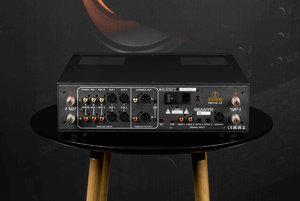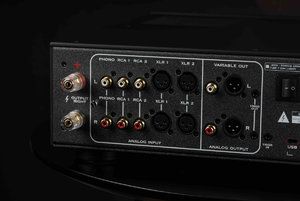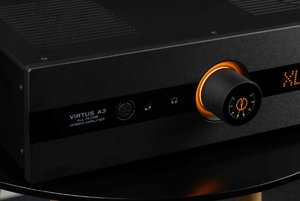Canor har endelig lansert sin nye alt i ett enhet.
Klasse A/AB, 6 digitale innganger, 4 analoge innganger, 1 phono MM/MC inngang.
I tillegg har den hodetelefonutganger i fronten - balansert og jack.
Pris ca 70.000,- Tilgjengelig i slutten av Mai.


Info fra Produsenten.
About VIRTUS A3
The Virtus A3 is a Dual Mono layout, fully differential balanced hybrid integrated tube amplifier supporting both digital and analog inputs.
The analog and digital signal paths are designed in dual mono configuration with fully independent multi-stage regulated power supplies for each channel.
The analog signal path is fully balanced and implemented by discrete symmetrical gain stages at the input equipped with dual paired JFET transistors.


Current Dumping Class A Tube Hybrid Power Amplifier
The 100+ W Power amplifier features a tube-based balanced differential input stage and differential feedback paths followed by a Class A Current Dumping output stage where a low-power Class A amplifier is always in control of the speaker load with a high-power class AB stage providing the heaver load current. This unique Current Dumping topology ensures that the low-power ultra linear Class A stage is always in control of the speaker load with the brute “force” power provided by the Class AB stage – this Class AB stage effectively isolates the “delicate” Class A stage from the “complex” speaker load currents. The topology ensures that there is no transition between class A and AB operating modes, resulting in the benefits of superior Class A audio performance and Class A signal linearity with the benefits of lower Class AB power dissipation.
The power amplifier features differential feedback, thereby sensing the Audio Output signal on both the positive and negative speaker terminals for maximum linearity. The Tube input stage has been chosen not just for the classic benefits of tube sound but also as tubes offer the least sensitivity to external RF interference – unwanted RF energy can result in intermodulation artifacts that are typically associated with a “hard and bright sound”. The Tube input stage of the amplifier is driven fully differentially from the analog or Digital signal paths and results in typical distortion figures of 0.0002 % at 1 W / 1 kHz with a signal-to-noise ratio at just 1 W of greater than 16-bit resolution.


Analog Signal Path
The Virtus A3 features a fully balanced symmetrical signal path implemented with discrete circuits, with no integrated IC-based OAMPS used in the direct signal path. Input selection is provided by high-quality relays that symmetrical feed discrete Class A Jfet zero feedback buffers. The output of these buffers drives a differential Analog step-attenuator for precise channel matching and the highest audio performance. The output of this differential step-attenuator is then fed to the power amplifier stage.
The design is fully DC coupled, implementing DC servo technology thereby eliminating the need for sonically detrimental AC coupling capacitors in the direct signal path. The Virtus A3 features a high-quality discrete Phono stage supporting both MM and MC cartridges with user-selectable cartridge loading. The cartridge loading can be selected by the user via from the front panel interface.
Digital Signal Path
The USB input is Galvanically isolated to prevent Ground loops between a typically noisy computer environment and the “Delicate” Audio system. During this isolation process, the USB signal is also re-synchronized to a local low-phase noise reference clock to attenuate the input USB jitter (and improve the USB Eye Pattern). The USB input is also RF-filtered to reduce external RF energy entering the Audio system. The combination of Galvanic isolation, USB Jitter attenuation, and RF filtering serves to “Detox” the external USB signal as much as possible before being fed to the Virtus A3’s internal USB Decoder circuitry.
The Asynchronous USB input supports PCM Audio Data up to 768 kHz / 32 bits and native DSD to DSD512. Besides the USB input, Optical, Coax, and Balanced AES-EBU inputs are supported and employ a digital-based PLL circuit to attenuate incoming signal jitter. Dual ESS DACs are used for digital-to-analog signal conversion and employ discrete analog regulators for their critical DAC arrays.
Vibration-isolated Low-phase noise clock oscillators serve as the ESS DACs Master clocks. The balanced analog output from the ESS DAC array is operated in Current Mode (I/V Mode) for maximum linearity (minimum voltage coefficient modulation of the DAC’s internal resistor array to reduce distortion).
The analog stage features a unique Jfet-based fully symmetrical gain stage with High current Class A output stages. This gain stage design implements simple second-order filtering with a unique topology that allows a passive first-order filter stage for maximum RF attenuation of the high-frequency energy from the ESS DAC array. This passive filter node helps reduce high-frequency RF noise currents causing possible intermodulation of the sensitive analogue active stages.
The whole new level of interaction with a CANOR device
For the first time ever in our product, we implemented a touch display to Virtus A3. The intention was to bring a whole new way of interaction experience with a CANOR device. The display offers all the features and settings accessible with just a finger tap. The UI works exactly how you would expect with a rotary knob all around the display making it as simple as possible to control Virtus A3.




mvh
Tom Egil
Klasse A/AB, 6 digitale innganger, 4 analoge innganger, 1 phono MM/MC inngang.
I tillegg har den hodetelefonutganger i fronten - balansert og jack.
Pris ca 70.000,- Tilgjengelig i slutten av Mai.


Info fra Produsenten.
About VIRTUS A3
The Virtus A3 is a Dual Mono layout, fully differential balanced hybrid integrated tube amplifier supporting both digital and analog inputs.
The analog and digital signal paths are designed in dual mono configuration with fully independent multi-stage regulated power supplies for each channel.
The analog signal path is fully balanced and implemented by discrete symmetrical gain stages at the input equipped with dual paired JFET transistors.


Current Dumping Class A Tube Hybrid Power Amplifier
The 100+ W Power amplifier features a tube-based balanced differential input stage and differential feedback paths followed by a Class A Current Dumping output stage where a low-power Class A amplifier is always in control of the speaker load with a high-power class AB stage providing the heaver load current. This unique Current Dumping topology ensures that the low-power ultra linear Class A stage is always in control of the speaker load with the brute “force” power provided by the Class AB stage – this Class AB stage effectively isolates the “delicate” Class A stage from the “complex” speaker load currents. The topology ensures that there is no transition between class A and AB operating modes, resulting in the benefits of superior Class A audio performance and Class A signal linearity with the benefits of lower Class AB power dissipation.
The power amplifier features differential feedback, thereby sensing the Audio Output signal on both the positive and negative speaker terminals for maximum linearity. The Tube input stage has been chosen not just for the classic benefits of tube sound but also as tubes offer the least sensitivity to external RF interference – unwanted RF energy can result in intermodulation artifacts that are typically associated with a “hard and bright sound”. The Tube input stage of the amplifier is driven fully differentially from the analog or Digital signal paths and results in typical distortion figures of 0.0002 % at 1 W / 1 kHz with a signal-to-noise ratio at just 1 W of greater than 16-bit resolution.


Analog Signal Path
The Virtus A3 features a fully balanced symmetrical signal path implemented with discrete circuits, with no integrated IC-based OAMPS used in the direct signal path. Input selection is provided by high-quality relays that symmetrical feed discrete Class A Jfet zero feedback buffers. The output of these buffers drives a differential Analog step-attenuator for precise channel matching and the highest audio performance. The output of this differential step-attenuator is then fed to the power amplifier stage.
The design is fully DC coupled, implementing DC servo technology thereby eliminating the need for sonically detrimental AC coupling capacitors in the direct signal path. The Virtus A3 features a high-quality discrete Phono stage supporting both MM and MC cartridges with user-selectable cartridge loading. The cartridge loading can be selected by the user via from the front panel interface.
Digital Signal Path
The USB input is Galvanically isolated to prevent Ground loops between a typically noisy computer environment and the “Delicate” Audio system. During this isolation process, the USB signal is also re-synchronized to a local low-phase noise reference clock to attenuate the input USB jitter (and improve the USB Eye Pattern). The USB input is also RF-filtered to reduce external RF energy entering the Audio system. The combination of Galvanic isolation, USB Jitter attenuation, and RF filtering serves to “Detox” the external USB signal as much as possible before being fed to the Virtus A3’s internal USB Decoder circuitry.
The Asynchronous USB input supports PCM Audio Data up to 768 kHz / 32 bits and native DSD to DSD512. Besides the USB input, Optical, Coax, and Balanced AES-EBU inputs are supported and employ a digital-based PLL circuit to attenuate incoming signal jitter. Dual ESS DACs are used for digital-to-analog signal conversion and employ discrete analog regulators for their critical DAC arrays.
Vibration-isolated Low-phase noise clock oscillators serve as the ESS DACs Master clocks. The balanced analog output from the ESS DAC array is operated in Current Mode (I/V Mode) for maximum linearity (minimum voltage coefficient modulation of the DAC’s internal resistor array to reduce distortion).
The analog stage features a unique Jfet-based fully symmetrical gain stage with High current Class A output stages. This gain stage design implements simple second-order filtering with a unique topology that allows a passive first-order filter stage for maximum RF attenuation of the high-frequency energy from the ESS DAC array. This passive filter node helps reduce high-frequency RF noise currents causing possible intermodulation of the sensitive analogue active stages.
The whole new level of interaction with a CANOR device
For the first time ever in our product, we implemented a touch display to Virtus A3. The intention was to bring a whole new way of interaction experience with a CANOR device. The display offers all the features and settings accessible with just a finger tap. The UI works exactly how you would expect with a rotary knob all around the display making it as simple as possible to control Virtus A3.
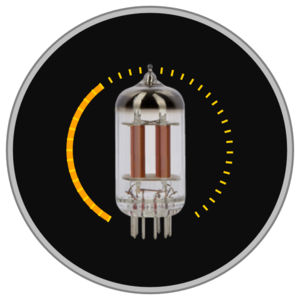
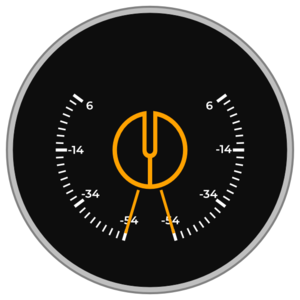
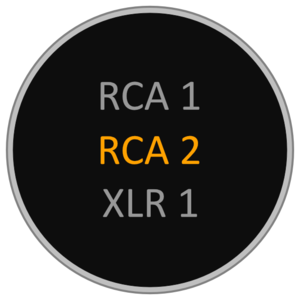
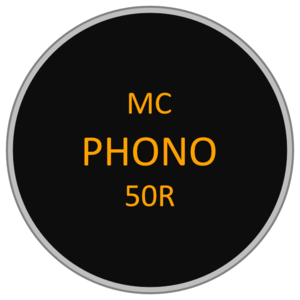
| Stereo Output Power | 2 x 150 W / 4 Ω (IHF Dynamic Power) 2 x 100 W / 8 Ω (IHF Dynamic Power) |
| Headphone Unbalanced Output | 500 mW / 30 Ω 70 mW / 300 Ω |
| Headphone Balanced Output | 500 mW / 30 Ω 270 mW / 300 Ω |
| Gain | 34.5 dB |
| Input Sensitivity | 550 mV |
| Gain Phono | MM 40 dB MM 46 dB MC 60 dB MC 66 dB |
| Damping Factor | 180 / 4 Ω 380 / 8 Ω |
| Frequency Range | 10 – 35 000 Hz (± 0.5 dB / 5 W) |
| Input Impedance | 50 kΩ |
| Analog Inputs | 1 pair RCA (Phono) 2 pairs RCA 2 pairs XLR |
| Analog Outputs (Variable Out) | 1 pair RCA 1 pair XLR |
| Digital Inputs | 2 x COAX 2 x OPTO 1 x USB 1 x AES/EBU |
| Headphone Outputs | 6.3 mm jack 4-pin XLR |
| Total Harmonic Distortion | < 0.005 % / 1 kHz, 5 W < 0.008 % / 1 kHz, 1 W |
| Signal-to-noise ratio | > 90 dB (20 Hz – 20 kHz) |
| Tube Complement | 2 x E88CC |
| Trigger Connectors (12 V) | 1 x IN (3.5 mm jack) 2 x OUT (3.5 mm jack) |
| Power | 115 / 230 V, 50 – 60 Hz, 820 VA |
| Dimensions (W x H x D) | 435 x 130 x 460 mm |
| Weight (Net) | 18 kg |
| Weight (Gross) | 23 kg |
mvh
Tom Egil
Vedlegg
-
143.7 KB Visninger: 38
-
183 KB Visninger: 41
-
114.7 KB Visninger: 39
-
114.7 KB Visninger: 33
-
122.7 KB Visninger: 35
-
100.2 KB Visninger: 34
-
110.3 KB Visninger: 31

